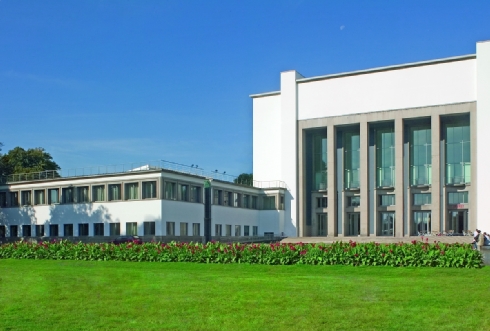The Deutsches Hygiene- Museum
The Universal "Museum of Man"
The Deutsches Hygiene Museum is neither a
science centre nor a special museum with a fixed subject range
but a universal "Museum of Man." As a modern science museum it
reflects the impact of science on society in the 21st century.
The increasing significance of modern life sciences, genetics
and brain research and the resulting cross-disciplinary
questions remain at the heart of the museum's interest. The
museum sees its role as providing an independent public forum
for dialogue between science and society reflected in its
exhibitions and events. Similar to the Anglo-Saxon definition
of "public understanding of sciences and humanities," the
museum's educational task is to promote understanding of the
sciences. However, the fascination associated with modern
science should not produce an uncritical faith in science.
Rather the museum wants to stimulate a responsible approach to
the possibilities afforded by modern science.
A Glorifying Combination of Science, Transparency and Rationality
The museum building designed by Wilhelm Kreis (1873 - 1955) served as the venue for the Second International Hygiene Exhibition in 1930, and is still in current use by the museum today. "The Transparent Man" ranked as the greatest attraction in the 1930 exhibition, in which the image of the human in the modern age was expressed in a glorifying combination of science, transparency and rationality. Since then, "The Transparent Man" has become the central figure of the Deutsches Hygiene-Museum and still represents one of its most prominent exhibits.
Source: Deutsches Hygiene-Museum


